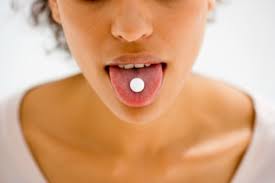Heroin was considered a “safe, non-addictive” substitute for morphine. Now psychologists, psychiatrists, therapists and counselors work with patients using Suboxone and Subutex as treatments for heroin and other opioid and opiate addiction. In the mid 1800’s opium was used to cure alcoholism. Many people come to me with the idea that they’ll use marijuana to cure their alcohol abuse. Does any of this work and is any of it really safe? It depends.

The word ‘addiction’ has been traced to the 17th century. During this time period addiction was defined as “being compelled to act out any number of bad habits.” Pepople abusing narcotics were called opium and morphine ‘eaters.’ ‘Drunkard’ referred to abusers of alcohol. The word ‘addiction’ and its definition were first printed in medical literature in the 19th century.
Unaware of cocaine’s addictive properties neurologist, Sigmund Freud and surgeon, William Halstead began their personal experiments with cocaine in the 1800’s. Their personal accounts led to world changing contributions in the fields of psychology and medicine. It wasn’t long after their discovery that physicians started prescribing cocaine to patients for pain relief. After a period of time Freud discovered that the initial dose of cocaine that he was using to treat his headaches stopped working. He also discovered that when the dose was increased he achieved the same effect-relief of headaches. Today we know this as ‘tolerance’.
Through additional research it was learned that cocaine successfully treated alcoholics and narcotic abusers. Today we consider this ‘trading one addiction for another’. Shortly thereafter in the late 1800s the use of cocaine as a recreational drug became an epidemic. The concept and practice of treating drug and alcohol use with medication still prevails and is an acceptable form of treatment when in conjunction with other aspects of treatment including psychotherapy, structure, supervision and support. In the mid 1800’s opium was promoted as a cure for alcoholism. Around 1875 heroin was considered a “safe, non-addictive” substitute for morphine addiction. Now we use Methadone, Suboxone and Subutex as treatments for heroin and other opioid and opiate addiction. The optimal outcome for anyone struggling with addiction is to be entirely drug free and completely abstinent. However because addiction is a chronic relapsing brain disease while it might be considered the lesser of evils, it is always better to treat addiction with a medication even if it has addictive properties if the only other option is that the addict or alcohol will continue to use their drug of choice as an alternative. At least when someone is being maintained on medication they are able to learn about their disease, attend treatment sessions, and become otherwise stabilized enough to focus on treatment and recovery. At that point they can begin the process of tapering off their medication when they are ready. Addiction psychologists can help with all aspects of these processes.
Read more about: Addiction as a Disease: A Brief History and Science
Read more about Addiction Psychology Defined at Wikipedia,